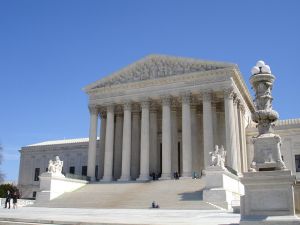
The named US patents are 7,130,616, 7,142,934, 7,142,935, and 7,167,765, but we note that the final three are all headed 'Audio converter device and method for using the same', have the same abstract and are therefore clearly variations on a theme.
Samsung has settled with EZ4Media for an unknown amount, Apple Insider said Thursday.
The lawsuit against Apple is similar to one brought by IBM. In that case, the technology company is alleging former executive Mark Papermaster could provide Apple inside information. A court has temporarily ruled Papermaster cannot join Apple’s hardware unit.
The U.S. Patent and Trademark Office needs to be overhauled if it is to come to grips with rising backlogs and a perception of declining patent quality, according to a report the U.S. Chamber of Commerce sent to President-elect Barack Obama. The report available online calls for sweeping changes in the leadership and structure of the patent office...
The U.S. International Trade Commission (ITC) has voted to investigate three patent complaints -- about semiconductor circuits, camera phones and flash memory chips -- that could lead to products being banned from import into the U.S.
A set of pharmaceutical process patents for 'evaluating and improving the safety of immunization schedules' (Classen v. Biogen et al.; see US Patents 6,420,139; 6,638,379; 5,728,385; 5,723,283) were held to be invalid due to unpatentability. The decision was appealed to the US Court of Appeals for the Federal Circuit, but was upheld with a terse citation to In re Bilski (which decision we discussed here).
For example, although Bilski states that a process claim is "surely" patent-eligible under section 101 if it complies with the machine-transformation test, this cannot be literally correct with respect to a naturally occurring biological process. Photosynthesis transforms carbon dioxide and water into sugar, and in Bilski the Court specifically points to chemical reactions as the sort of physical transformation that will render a process patentable, but a claim directed to photosynthesis would clearly violate Supreme Court precedent which bars the patenting of natural phenomena.
The In re Bilski (545 F.3d 943 [Fed. Cir. 2008]; here’s a PDF of the decision) court decision placed significant new limits on so-called “process” or “business method” patents, which possible implications for many software patents.
Two months ago, in In re Bilski, the Federal Circuit rejected the notion that anything that produces a "useful, concrete, and tangible result" is potentially patentable. Instead, to be patent-eligible, an idea must be "tied to a particular machine or apparatus," or it must "transform a particular article into a different state or thing." (To qualify for a patent, it also has to meet various other requirements, such as being novel.)
As to transformation, the court noted that not just any transformation will do. The transformation "must be central to the purpose of the claimed process," and the "articles" transformed must either be "physical objects or substances" or "representative of physical objects or substances."
